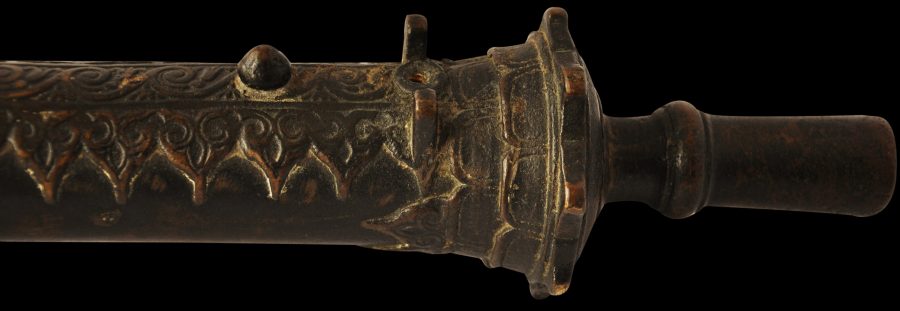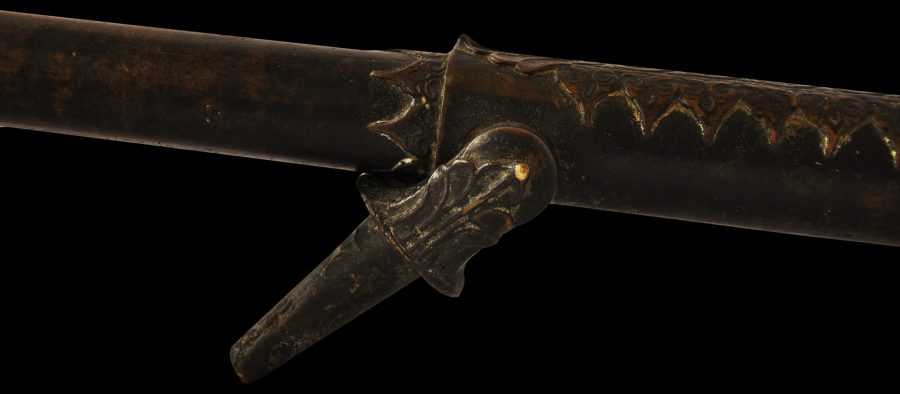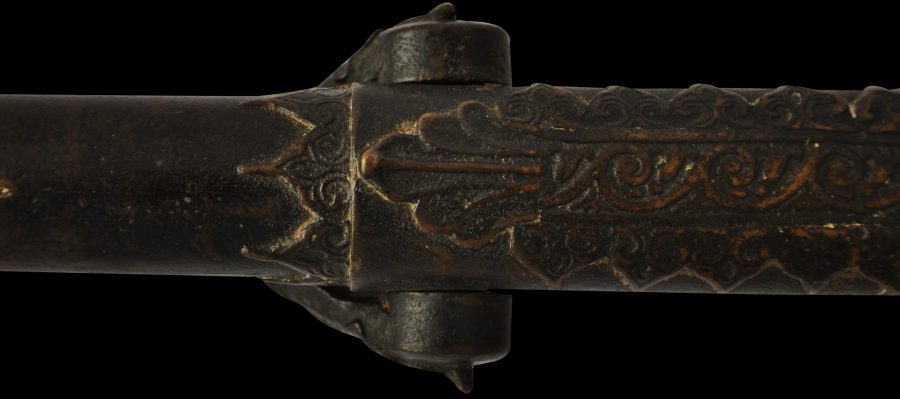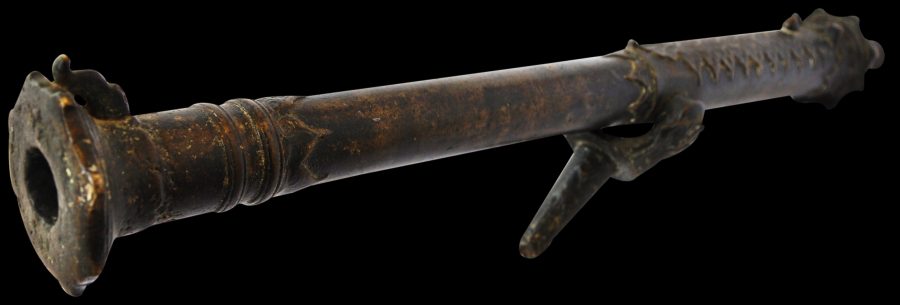Enquiry about object: 1159
Borneo Brass Cannon (Lantaka)
Sarawak (Malaysia) or Brunei 18th-19th century
length: 65cm
Provenance
UK art market
This fine brass cannon with a 2.5 centimetre bore is cast with leaf and petal motifs typical of Borneo. It is in fine condition with obvious age and an excellent patina.
It has an elongated cascabel, a breech cast as an open lotus from which the barrel extends and a muzzle that flares with another petal motif. The top of the barrel is cast with a series of petal motifs infilled with scrollwork, suggestive of both the Islamic and Chinese influence on the artwork of Borneo and Brunei. The top of the barrel also has an air vent with cast nodes to either side. The swivel is cast with prominent rococo-like leaf motifs.
Many of these beautiful guns were mounted on swivels and were known as swivel guns. The smaller ones could be mounted almost anywhere including in the rigging of sailing vessels.
The earliest cannons of this form came from foundries in the Netherlands and Portugal. Initially, the Dutch and Portuguese traded cannons not only for spices and porcelain, but also for safe passage through otherwise potentially hostile waters. They came to be copied and localised by foundries in the Dutch East Indies and most particularly on Borneo – in what is now the Malaysian state of Sarawak and the sultanate of Brunei. Brass and bronze cannons cast with stylised crocodile, lotus and bamboo shoot motifs.
Cannons were used to transmit messages: they were fired to mark births and weddings, to warn villages of impending attack or to mark the end of the fasting month of Ramadan.
Possession of such canons also became a store and show of wealth. They were used to decorate boats to demonstrate the importance of the boat owner. They were given positions of prominent in long houses, again as a display of importance and wealth. They were used also as a form of currency with the exchange of cannons being used to settle debts.
Many of the finest cannon were given out by the Sultans of Brunei as part of ceremonies (such as birthdays or weddings) of the many princes and princesses of the extended Royal family. Cannons were frequently presented to guests along with awards and titles, and were meant to guarantee the recipients allegiance to the Sultan. Lantaka cannons are now sought after in Southeast Asia. They are now a prohibited export from Brunei (this example was acquired from an old UK collection.)
Similar cannons are illustrated in Chin (1980, p. 43) and Zandvliet (2002, p. 339).
References
Chin, L., Cultural Heritage of Sarawak, Sarawak Museum, 1980.
Singh, B., Malay Brassware, National Museum of Singapore, 1985.
Zandvliet, K. et al, The Dutch Encounter with Asia 1600-1950, Rijksmuseum Amsterdam, 2002.








